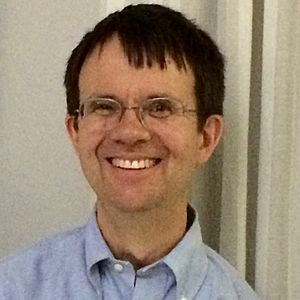Eric Allin Cornell facts for kids
Quick facts for kids
Eric Allin Cornell
|
|
|---|---|

Cornell in June 2015
|
|
| Born | December 19, 1961 |
| Alma mater | Stanford University (BS) Massachusetts Institute of Technology (PhD) |
| Known for | Bose–Einstein condensation |
| Awards |
|
| Scientific career | |
| Fields | Physics |
| Institutions | University of Colorado Boulder National Institute of Standards and Technology (NIST) JILA |
| Thesis | Mass spectroscopy using single ion cyclotron resonance (1990) |
| Doctoral advisor | David E. Pritchard |
Eric Allin Cornell is an American scientist who made a huge discovery in physics. He was born on December 19, 1961. In 1995, he and his colleague Carl E. Wieman created something called a Bose–Einstein condensate. This is a special state of matter that only happens at extremely cold temperatures. For this amazing work, Cornell, Wieman, and another scientist named Wolfgang Ketterle, won the Nobel Prize in Physics in 2001.
Contents
Early Life and Education
Eric Cornell was born in Palo Alto, California. His parents were studying at Stanford University nearby. When he was two, his family moved to Cambridge, Massachusetts. His father was a professor at MIT. Eric grew up there with his younger brother and sister. They also spent time in Berkeley, California, and Lisbon, Portugal.
He went to high school in Cambridge. Before graduating, he moved back to California with his mother. He finished high school at Lowell High School in San Francisco. This school was known for its smart students.
College and Early Research
After high school, Eric went to Stanford University. There, he met his future wife, Celeste Landry. During college, he worked in labs that studied very cold temperatures. He did well in his classes and his lab jobs. He thought about a career in physics.
However, he also considered studying literature or politics. He took nine months off to go to China and Taiwan. He volunteered to teach English and studied the Chinese language. When he returned to Stanford, he decided to focus on physics. He graduated with honors in 1985.
Graduate School and PhD
For his graduate studies, Eric went back to MIT. He joined a research group led by David E. Pritchard. This group was trying to measure the mass of a tiny particle called the electron neutrino. Even though he couldn't find the exact mass, Eric earned his PhD in 1990.
Scientific Discoveries
After getting his doctorate, Eric Cornell joined Carl Wieman at the University of Colorado Boulder. He worked as a researcher on a small experiment. This experiment used laser cooling to make things very cold.
Creating the Bose-Einstein Condensate
During his time as a researcher, Eric came up with a new idea. He planned to combine laser cooling with another method called evaporative cooling. He wanted to use these techniques in a magnetic trap. His goal was to create a Bose–Einstein condensate (BEC).
Based on his idea, he was offered a permanent job at JILA/NIST in Boulder. In 1995, Eric Cornell and Carl Wieman successfully created the first Bose-Einstein condensate. This was a huge breakthrough in physics.
Nobel Prize and Further Work
For creating the first Bose-Einstein condensate, Cornell, Wieman, and Wolfgang Ketterle shared the Nobel Prize in Physics in 2001. This award recognized their important discovery.
In 1997, another scientist named Deborah S. Jin joined Cornell's group at JILA. She led a team that created a different type of condensate in 2003. This was called a fermionic condensate.
Eric Cornell is still a professor at the University of Colorado Boulder. He is also a physicist at the National Institute of Standards and Technology. His lab is located at JILA.
Awards and Honors
Eric Cornell has received many awards for his scientific work. The most famous is the Nobel Prize in Physics in 2001.
- Nobel Prize in Physics, 2001
- Member, National Academy of Sciences, 2000
- R. W. Wood Prize, Optical Society of America, 1999
- Benjamin Franklin Medal in Physics, 1999
- Lorentz Medal, Royal Netherlands Academy of Arts and Sciences, 1998
- King Faisal International Prize in Science, 1997
- National Science Foundation Alan T. Waterman Award, 1997
- Carl Zeiss Award, Ernst Abbe Fund, 1996
- Fritz London Prize in Low Temperature Physics, 1996
- Department of Commerce Gold Medal, 1996
- Presidential Early Career Award in Science and Engineering, 1996
- Newcomb-Cleveland Prize, American Association for the Advancement of Science, 1995–96
- George Gamow Memorial Lecture, 1995
- Samuel Wesley Stratton Award, National Institute of Science and Technology, 1995
Personal Life
Eric Cornell married Celeste Landry in 1995. This was just a few months before his successful BEC experiment. They have two daughters. Their first daughter was born in 1996, and their second in 1998.
In October 2004, Eric faced a serious health challenge. He recovered and returned to work in April 2005. He has also participated in the Bolder Boulder race several times since moving to Boulder in 1990. He last ran in 2022.
See also
 In Spanish: Eric A. Cornell para niños
In Spanish: Eric A. Cornell para niños

